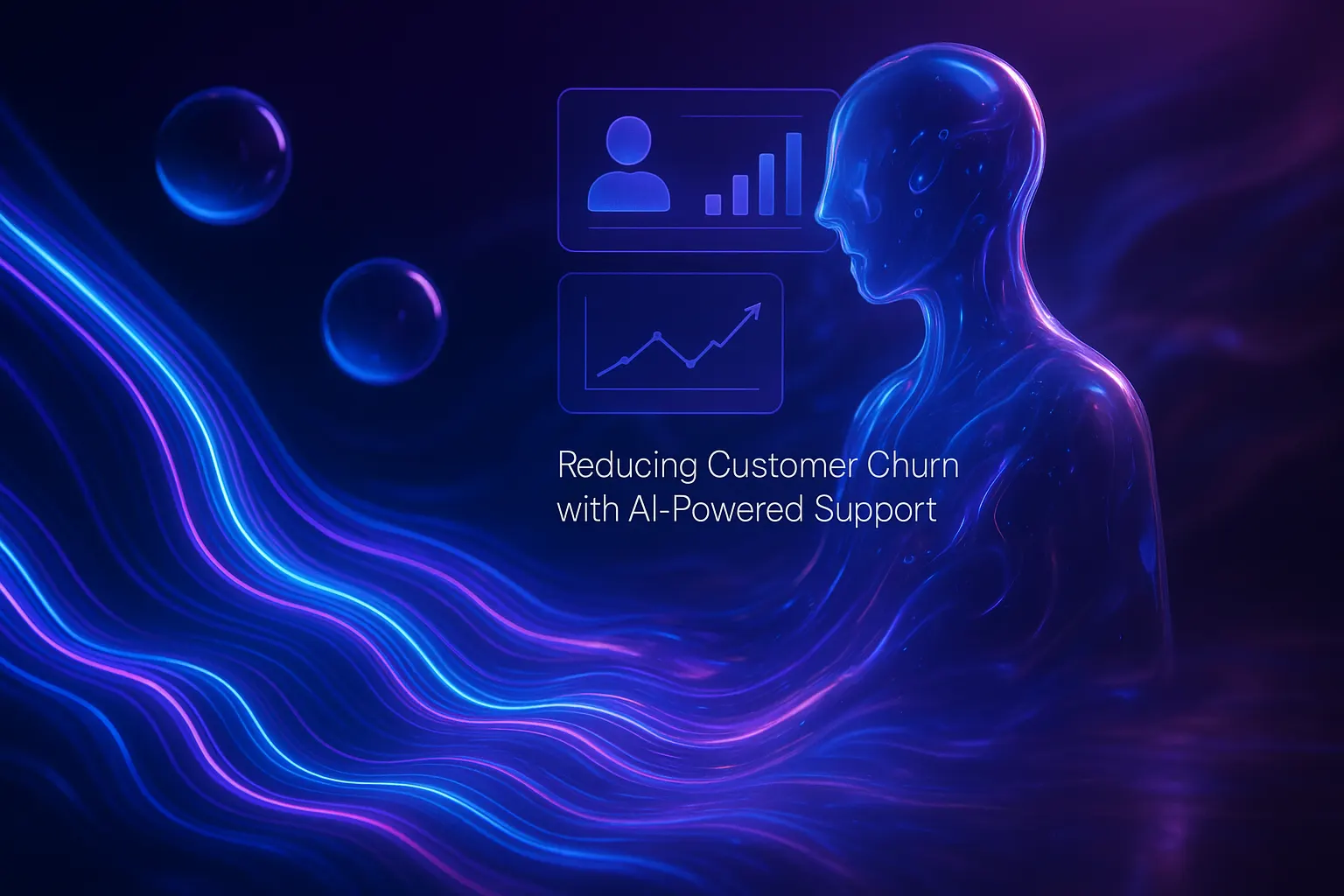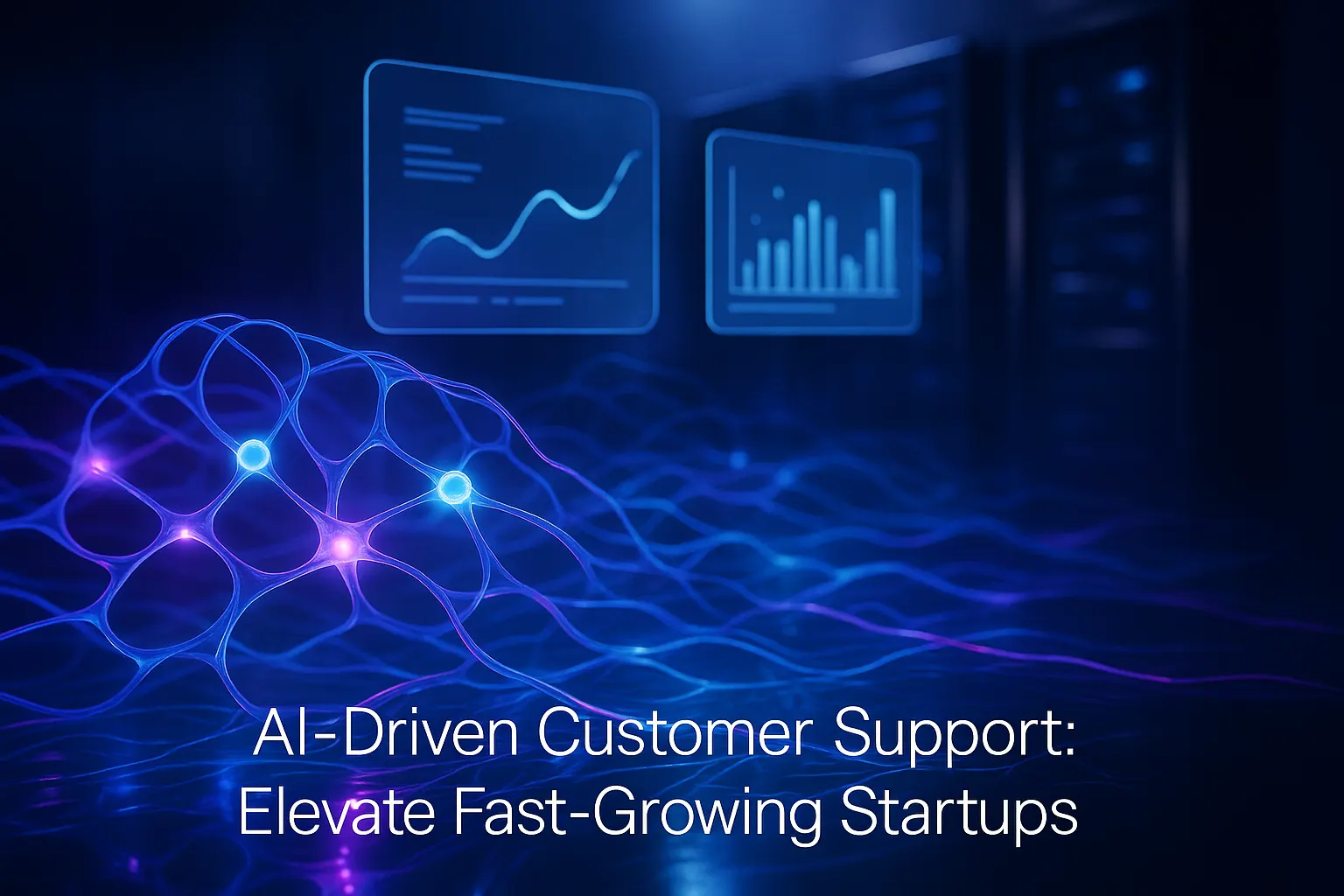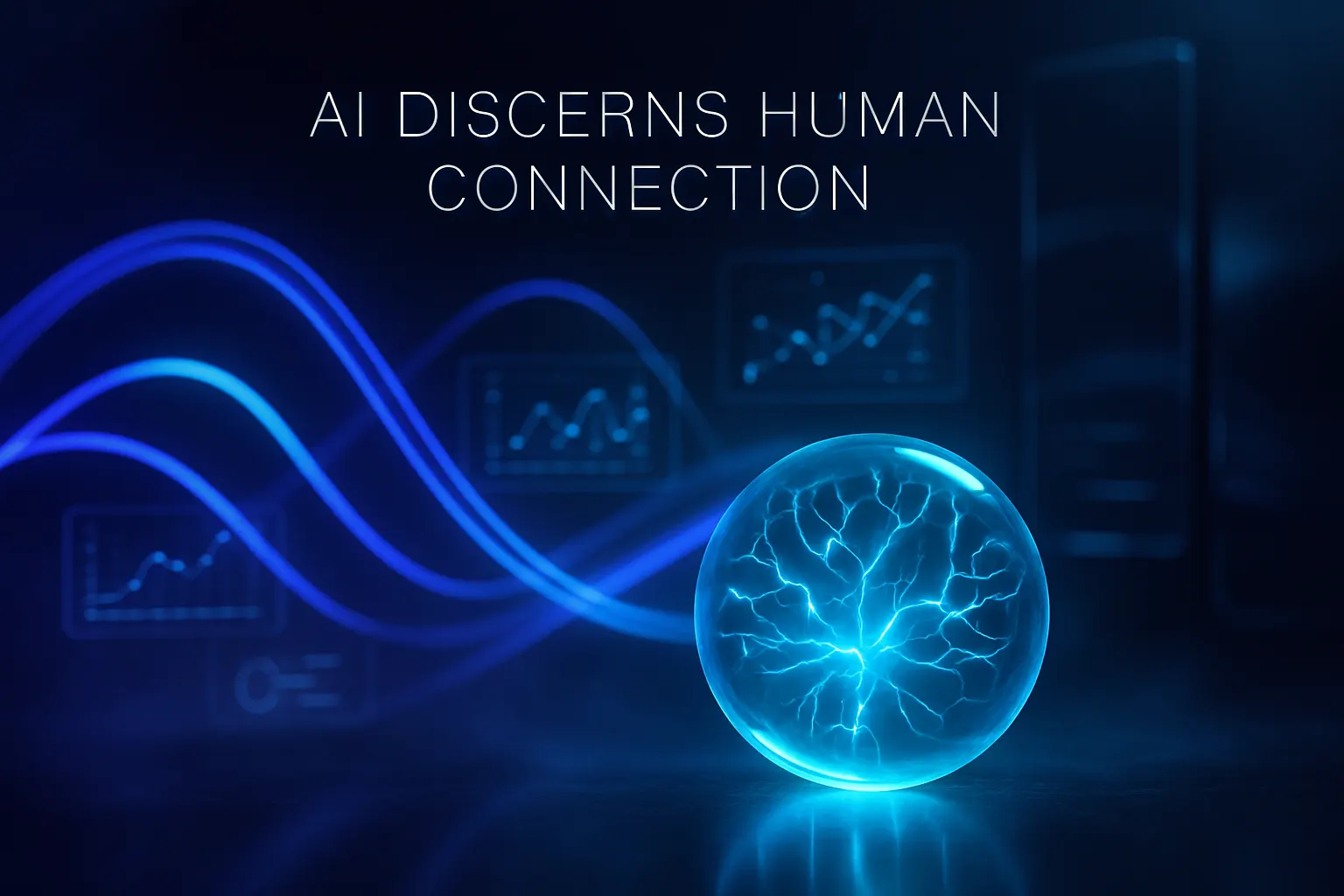Churn starts in the inbox
Customer loyalty is determined during moments of need, and your support team is at center stage. Every interaction signals product fit, reliability, and care. AI tools empower your team to respond more quickly, maintain consistent tone, and address issues before they spread, this is where churn is influenced.
Retaining customers is achieved through a chain of small, consistent wins: greeting customers with the right tone, giving clear and accurate answers, and following up at the right moments. AI-powered support systems help your team deliver these wins at scale, reducing uncertainty and confirming your product’s value.
Spot early churn signals in your support data
Churn is rarely a surprise, it leaves a trail in tickets, chats, and calls. By tracking these early signals, you can trigger timely action:
- Rising time to first response. Delays create anxiety and can push customers to seek alternatives.
- Repeat contacts on the same topic. These often expose gaps in your knowledge base or in product design.
- Negative sentiment or tense language. Signs of frustration require fast and senior intervention.
- Downtime or billing friction. Even a single failed charge may prompt a customer to consider leaving.
- Low feature adoption after onboarding. This could signal a need for improved customer education or a mismatch between product features and customer expectations.
- Unresolved tickets near renewal. Especially critical for B2B accounts, this is a major warning sign.
Use these signals to create a churn risk score. Route higher-risk tickets to your most skilled agents. Let AI draft targeted answers, but always include human review for quality assurance.
Four AI plays that keep customers from leaving
1) Intelligent triage with risk-based routing
Assess each support ticket for urgency and churn risk by analyzing sentiment, topic, account tier, and renewal timing. Route high-risk items directly to senior agents, equipping them with context and suggested responses. This approach shortens the time needed to achieve clarity.
2) Guided replies with brand-safe language
AI can assist in generating replies that align with your brand voice, but it’s important to retain human oversight for nuanced or sensitive communication. Use short, editable drafts grounded in your knowledge base to help agents save time and reduce errors, while keeping quality high.
3) Next-best actions for durable resolution
Good replies solve the present issue. Great replies anticipate and address potential future issues. Beyond resolving the immediate concern, recommend tutorials, feature toggles, or settings changes, and offer scheduling links for complex problems. Always close the loop with a clear summary.
4) Proactive outreach triggered by patterns
Identify patterns like recurring failed imports or slow API calls, and proactively contact affected users with clear information on fixes and expected resolution times. Apologize where needed. Proactive support goes a long way to restore trust and safeguard renewals.
Measure what prevents churn, not just what closes tickets
Traditional support metrics are useful, but retention metrics are even more important. Bring both together in a unified view. Key metrics to track include:
- First response time segmented by risk tier.
- Time to full resolution for leading churn drivers.
- Sentiment change from first contact to last reply.
- Repeat contact rate at 14 and 30-day intervals.
- Feature adoption post-support within the following week.
- Renewals and expansions among accounts that recently opened tickets.
Consider developing a model based on these inputs to help predict churn rate. Remember, it’s important to continuously validate and refine your model against past data for accuracy. Make your findings available to both your customer success and product teams.
From pilot to scale: Key Steps
Focus your scope. Start with one or two high-churn areas such as onboarding or billing to validate your AI support setup.
Connect your systems. Link CRM, help desk, and knowledge base to give the AI complete context for accurate replies.
Set standards. Define tone, escalation rules, and approval workflows so every response stays consistent and compliant.
Test and refine. Use AI-drafted replies under human review, monitor results, and adjust prompts or articles based on feedback.
Expand gradually. Once performance is stable, scale to new channels or hours of coverage while maintaining quality control.
Build a knowledge base that actually reduces churn
The effectiveness of your AI support depends on the quality of your content. Start by focusing on the issues most often linked to customer exits. Write clear, concise, task-oriented articles that prioritize solutions before background context. Use screenshots and direct, step-by-step instructions. Update your content actively when recurring tickets surface.
Struggling with what to document first? Start by reviewing your most common support requests to find recurring themes and high-demand areas. Cover these topics comprehensively and ensure your support team links to them within customer replies.
Include ready-to-use snippets for refunds, billing updates, and account security. Have legal content reviewed to ensure compliance. These practices help your replies remain consistent, correct, and compliant.
Privacy, accuracy, and trust by design
Customers often trust you with sensitive information, handle it with care. Limit AI training on data to approved sources only, set strict access controls, and maintain an audit trail for all AI-generated suggestions and human edits. Make opting out straightforward for sensitive fields, building trust and reducing risk for everyone involved.
Accuracy is crucial. Tie your replies directly to verified knowledge base content and CRM records. Turn off free-form responses for regulated topics. Require human review for all billing, medical, or security-related queries, and make escalation easy when something seems off.
A quick scenario: from risk to renewal
Picture this: An account submits three tickets about export failures. Sentiment turns negative, and your system flags a high churn risk, routing the case for priority handling. The agent receives a summarized brief with a suggested response that addresses the fix, provides a status page link, and includes a well-crafted apology.
The agent personalizes and sends the reply within minutes. A follow-up is triggered automatically the next day, checking on the fix and sharing a tutorial to prevent repeat issues. The customer responds positively. Renewal becomes the easy, obvious choice.
Operational tips that pay compounding dividends
- Tag tickets by feature and lifecycle stage for more actionable insights.
- Keep replies concise and purposeful, always including a clear next step.
- Close with a summary and invite customers to reopen the conversation within a week.
- Hold a weekly review on churn risk with support, product, and success teams.
- Publish a monthly changelog that support can use to keep responses current.
- Celebrate every retained account to reinforce strong habits and culture.
Final thought. Reducing churn is not a one-off initiative, it’s a system built on precise replies, timely interventions, and thoughtful measurement. AI equips your team to deliver this system consistently, day after day.
Want a practical, privacy-first way to write faster and retain more customers? Connect with Typewise. We’re happy to discuss your needs and share examples tailored to your tech stack.
FAQ
How can AI tools help reduce customer churn?
AI tools can identify early churn signals in customer interactions and automate timely responses, allowing support teams to address issues before they drive customers away. The real win is in scaling personalized interventions rapidly, a feat human teams alone struggle to maintain consistently.
What are the risks of neglecting early churn signals?
Ignoring early churn indicators like delayed responses or negative sentiment leads to unchecked dissatisfaction, pushing customers to explore competitors. The cost isn't just a lost sale; it's a potential ripple effect of negative word-of-mouth, further eroding market trust.
Why is maintaining a consistent tone in customer interactions crucial?
A consistent tone reinforces brand reliability and establishes trust. Erratic communication signals disorganization, causing customers to question both your care for their needs and your product's dependability.
How should customer support teams handle high-risk tickets?
High-risk tickets should be prioritized and routed to experienced agents equipped with all context and AI-suggested responses. Human oversight remains critical to adapt the interaction to nuanced and sensitive issues effectively.
Why is reactive customer support insufficient for churn prevention?
Reacting post-issue misses the opportunity to avert dissatisfaction before it's cemented. Proactive outreach based on pattern recognition not only resolves existing issues but strengthens preventive measures, turning a potential churn into a renewal.
What role does an AI-curated knowledge base play in reducing churn?
An AI-backed knowledge base provides precise, reliable content that preempts typical customer queries, avoiding repetitive support requests. It requires regular updates to remain relevant, which transforms it from a static reference to a dynamic churn-defense tool.
What are the dangers of poorly managed AI interventions in customer support?
Poorly managed AI can lead to generic or incorrect responses, damaging customer trust and escalating issues. This not only increases churn risk but can also expose the company to legal risks if sensitive data is mishandled without rigorous oversight.
What metrics should be prioritized for a complete view of customer retention efforts?
Traditional support metrics need blending with retention metrics like first response time by risk tier, resolving leading churn drivers, and feature adoption. A myopic focus on ticket closure blinds you to broader trends and threats to customer loyalty.





